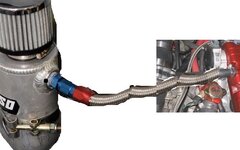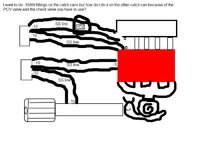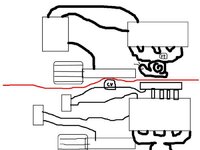Aproductions
10+ Year Contributor
- 2,124
- 50
- Aug 11, 2009
-
Allentown,
Pennsylvania
Alright so I wanna to the 2 oil catch can method.
1 from the intake manifold to the PCV valve.
1 from the intake to the side of the VC.
I want SS lines and An fittings from the cans but since I can't AN my PCV valve or anything would it work to just cut some of the SS part away and use it like a regular hose?
1 from the intake manifold to the PCV valve.
1 from the intake to the side of the VC.
I want SS lines and An fittings from the cans but since I can't AN my PCV valve or anything would it work to just cut some of the SS part away and use it like a regular hose?





 if you ask me on any kind of a daily driver.
if you ask me on any kind of a daily driver.















